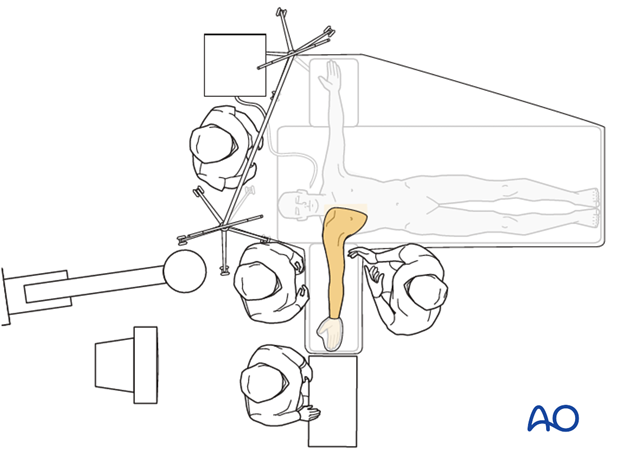Supine position
1. Introduction
All anterior, anterolateral, lateral and medial approaches may be performed with the patient supine. It is the preferred position for anterior plating and external fixation. It is the position of choice in any emergency.
An additional arm table is recommended.
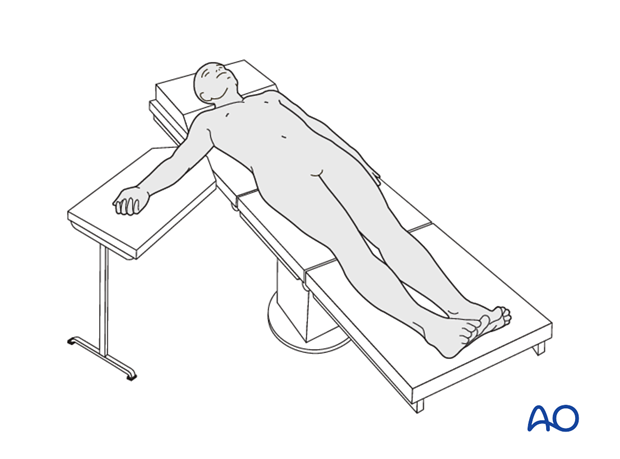
2. Preoperative preparation
Operating room personnel (ORP) need to know and confirm:
- Site and side of fracture
- Type of operation planned
- Ensure that operative site has been marked by the surgeon
- Condition of the soft tissues
- Implant to be used
- Patient positioning
- Details of the patient (including a signed consent form and appropriate antibiotic and thromboprophylaxis)
- Comorbidities, including allergies
3. Anesthesia
- General anesthesia
- Local nerve block
- Combination of nerve block and light general anesthesia
4. Patient position
Place the patient supine on an operating table with an attached radiolucent arm table. Abduct the injured arm to approximal 60°, or more, if necessary, to relax the deltoid muscle.
Take care to avoid traction on the brachial plexus by not over abducting or extending the arm at the shoulder. To prevent this, the hand table must be at the same level as the operating table.
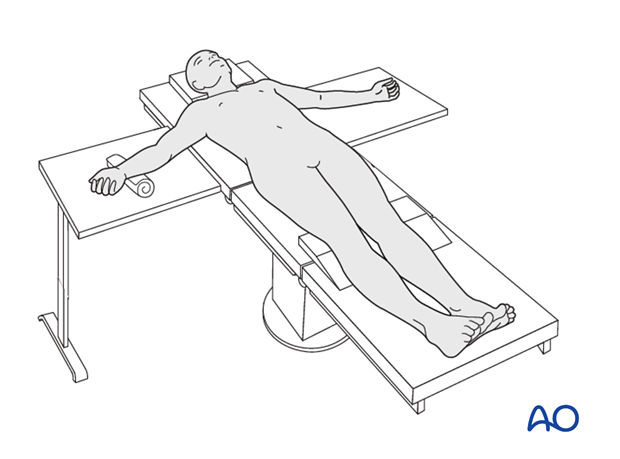
5. C-arm positioning
Introduce the image intensifier from the top of the OR table.
The entire humerus including humeral head and elbow must be visible in two planes with the image intensifier.
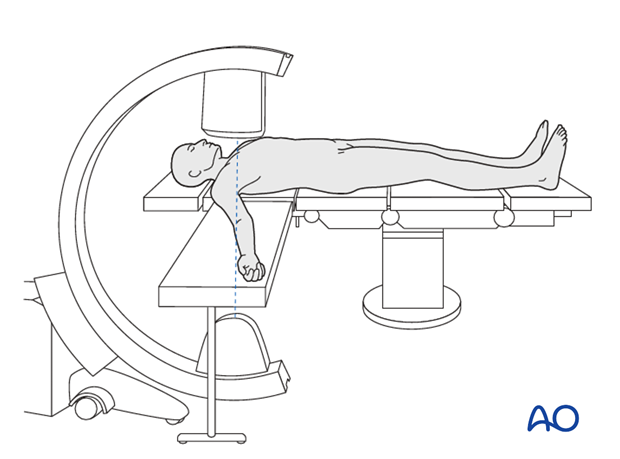
6. Skin disinfecting and draping
Disinfect the limb up to the shoulder.
For draping either cotton blankets or preshaped single-use drapes may be used.
If cotton blankets are used, place a single drape over the hand table, followed by a larger drape on top which is wrapped around the limb as a shut off.
Spread a third large drape over the patient’s body.
Drape the image intensifier.
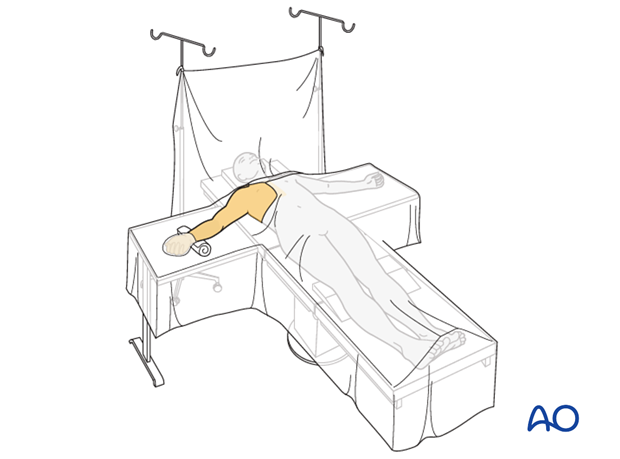
7. Operating room set-up
Depending on the degree of abduction at the shoulder, the surgeon may sit or stand next to the patient’s trunk or lateral to the limb.
The assistant sits or stands on the opposite side of the side table.
The ORP is positioned next to the assistant.
Make sure the assistant and the scrub nurse do not impede the access of the image intensifier.
Place the image intensifier display screen in full view of the surgical team and the radiographer.
